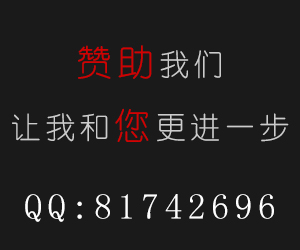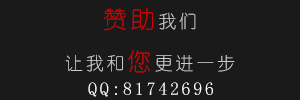
java JDK里面容器类的排序算法使用的主要是插入排序和归并排序,可能不同版本的实现有所不同,关键代码如下:
代码如下:
/**
* Performs a sort on the section of the array between the given indices
* using a mergesort with exponential search algorithm (in which the merge
* is performed by exponential search). n*log(n) performance is guaranteed
* and in the average case it will be faster then any mergesort in which the
* merge is performed by linear search.
*
* @param in -
* the array for sorting.
* @param out -
* the result, sorted array.
* @param start
* the start index
* @param end
* the end index + 1
*/
@SuppressWarnings("unchecked")
private static void mergeSort(Object[] in, Object[] out, int start,
int end) {
int len = end - start;
// use insertion sort for small arrays
if (len <= SIMPLE_LENGTH) {
for (int i = start + 1; i < end; i++) {
Comparable<Object> current = (Comparable<Object>) out[i];
Object prev = out[i - 1];
if (current.compareTo(prev) < 0) {
int j = i;
do {
out[j--] = prev;
} while (j > start
&& current.compareTo(prev = out[j - 1]) < 0);
out[j] = current;
}
}
return;
}
int med = (end + start) >>> 1;
mergeSort(out, in, start, med);
mergeSort(out, in, med, end);
// merging
// if arrays are already sorted - no merge
if (((Comparable<Object>) in[med - 1]).compareTo(in[med]) <= 0) {
System.arraycopy(in, start, out, start, len);
return;
}
int r = med, i = start;
// use merging with exponential search
do {
Comparable<Object> fromVal = (Comparable<Object>) in[start];
Comparable<Object> rVal = (Comparable<Object>) in[r];
if (fromVal.compareTo(rVal) <= 0) {
int l_1 = find(in, rVal, -1, start + 1, med - 1);
int toCopy = l_1 - start + 1;
System.arraycopy(in, start, out, i, toCopy);
i += toCopy;
out[i++] = rVal;
r++;
start = l_1 + 1;
} else {
int r_1 = find(in, fromVal, 0, r + 1, end - 1);
int toCopy = r_1 - r + 1;
System.arraycopy(in, r, out, i, toCopy);
i += toCopy;
out[i++] = fromVal;
start++;
r = r_1 + 1;
}
} while ((end - r) > 0 && (med - start) > 0);
// copy rest of array
if ((end - r) <= 0) {
System.arraycopy(in, start, out, i, med - start);
} else {
System.arraycopy(in, r, out, i, end - r);
}
}
看到编程珠玑上有一个很有趣的排序算法-位图法其思想是用1位来表示[0~n-1]中的整数是否存在。1表示存在,0表示不存在。即将正整数映射到bit集合中,每一个bit代表其映射的正整数是否存在。
比如{1,2,3,5,8,13}使用下列集合表示:
0 1 1 1 0 1 0 0 1 0 0 0 0 1 0 0 0 0 0 0
伪代码如下:
for (i in [0~n-1]) bit[i] = 0;
for(i in [0~n-1])
if (i in input file)
bit[i] = 1
for(i in [0~n-1])
if(bit[i] == 1)
output i
用java 代码尝试下,效率果然不错:
代码如下:
public class javaUniqueSort {
public static int[] temp = new int[1000001];
public static List<Integer> tempList = new ArrayList<Integer>();
public static int count;
public static void main(final String[] args) {
List<Integer> firstNum = new ArrayList<Integer>();
List<Integer> secondNum = new ArrayList<Integer>();
for (int i = 1; i <= 1000000; i++) {
firstNum.add(i);
secondNum.add(i);
}
Collections.shuffle(firstNum);
Collections.shuffle(secondNum);
getStartTime();
Collections.sort(firstNum);
getEndTime("java sort run time ");
getStartTime();
secondNum = uniqueSort(secondNum);
getEndTime("uniqueSort run time ");
}
public static List<Integer> uniqueSort(final List<Integer> uniqueList) {
javaUniqueSort.tempList.clear();
for (int i = 0; i < javaUniqueSort.temp.length; i++) {
javaUniqueSort.temp[i] = 0;
}
for (int i = 0; i < uniqueList.size(); i++) {
javaUniqueSort.temp[uniqueList.get(i)] = 1;
}
for (int i = 0; i < javaUniqueSort.temp.length; i++) {
if (javaUniqueSort.temp[i] == 1) {
javaUniqueSort.tempList.add(i);
}
}
return javaUniqueSort.tempList;
}
public static void getStartTime() {
javaShuffle.start = System.nanoTime();
}
public static void getEndTime(final String s) {
javaShuffle.end = System.nanoTime();
System.out.println(s + ": " + (javaShuffle.end - javaShuffle.start) + "ns");
}
}
运行时间:
java sort run time : 1257737334ns
uniqueSort run time : 170228290ns
java sort run time : 1202749828ns
uniqueSort run time : 169327770ns
如果有重复数据,可以修改下:
代码如下:
public class javaDuplicateSort {
public static List<Integer> tempList = new ArrayList<Integer>();
public static int count;
public static void main(final String[] args) {
Random random = new Random();
List<Integer> firstNum = new ArrayList<Integer>();
List<Integer> secondNum = new ArrayList<Integer>();
for (int i = 1; i <= 100000; i++) {
firstNum.add(i);
secondNum.add(i);
firstNum.add(random.nextInt(i + 1));
secondNum.add(random.nextInt(i + 1));
}
Collections.shuffle(firstNum);
Collections.shuffle(secondNum);
getStartTime();
Collections.sort(firstNum);
getEndTime("java sort run time ");
getStartTime();
secondNum = uniqueSort(secondNum);
getEndTime("uniqueSort run time ");
}
public static List<Integer> uniqueSort(final List<Integer> uniqueList) {
javaDuplicateSort.tempList.clear();
int[] temp = new int[200002];
for (int i = 0; i < temp.length; i++) {
temp[i] = 0;
}
for (int i = 0; i < uniqueList.size(); i++) {
temp[uniqueList.get(i)]++;
}
for (int i = 0; i < temp.length; i++) {
for (int j = temp[i]; j > 0; j--) {
javaDuplicateSort.tempList.add(i);
}
}
return javaDuplicateSort.tempList;
}
public static void getStartTime() {
javaShuffle.start = System.nanoTime();
}
public static void getEndTime(final String s) {
javaShuffle.end = System.nanoTime();
System.out.println(s + ": " + (javaShuffle.end - javaShuffle.start) + "ns");
}
}
这种算法还是有很明显的局限性的,比如说要知道数据中最大的数值,更重要的是数据的疏密程度,比如说最大值为1000000而要数组大小只有100,那么效率会下降的非常明显。。。。。但是,使用位图法进行排序,确实让人眼前一亮。位图法通常是用来存储数据,判断某个数据存不存在或者判断数组是否存在重复 。
零七网部分新闻及文章转载自互联网,供读者交流和学习,若有涉及作者版权等问题请及时与我们联系,以便更正、删除或按规定办理。感谢所有提供资讯的网站,欢迎各类媒体与零七网进行文章共享合作。



